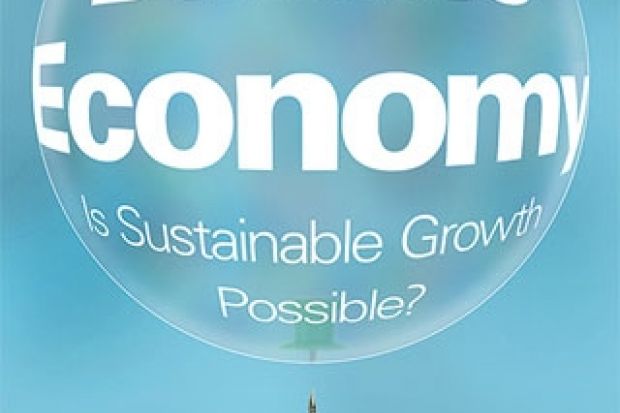Roll up, roll up! Play the great Global Financial Crisis blame game. Any number can play. No previous experience or specialist knowledge required. Fun for all the family. Just gather round and get ready to “bash the bankers”.
Robert Ayres is the latest of a long line of commentators to answer the barker’s call. A physicist by training and now emeritus professor of economics and political science at Insead, he has set about the task with a will, and an acid pen.
His unique selling proposition, or at least the one his publishers have identified, is that he “connects economic instability to the economics of energy”. That sounds a potentially interesting take on recent events. In Nature in 2011, Robert May, former chief scientific adviser to the government, and Andy Haldane, chief economist at the Bank of England, tried to interpret the contagion in financial markets by looking at the propagation patterns of infectious diseases, with intriguing results. Chaos theory has also proved illuminating. Maybe analogies from energy and climate change can perform a similar function.
Unfortunately, we do not find that out from Ayres. He says a few sensible things about carbon emissions, and a few pessimistic things about the likely results of the fracking phenomenon that I am not competent to assess. But the links with finance amount to no more than the fact that those short chapters are to be found within the same hard covers as a racy, abbreviated financial history of the US.
Some of the narrative he sets out is unexceptionable and broadly accurate. The stories of financial booms and busts are such as may be read in any respectable online encyclopedia. If you have never heard of the Wall Street Crash, you will find his description new and exciting. In other areas, especially when he ventures overseas, Ayres is rather less reliable. He has, for example, bought into the conspiracy theory about the Bank for International Settlements in Basle that one can find on a variety of strange websites. He tells us, for example, that Montagu Norman, governor of the Bank of England from 1920 to 1944, was “a Nazi sympathizer”. That is a rather extreme interpretation of Norman’s actions in relation to Austrian and Czech gold at the beginning of the Second World War when he approved its transfer to the Reichsbank, even if it was not exactly the Bank of England’s finest hour.
It is not wholly clear how and why these historical digressions link to Ayres’ main theme. The book lacks a coherent structure, but eventually it does work up to one firm argument. Ayres believes that the crisis was in good part caused by the repeal of the four provisions of the US Banking Act of 1933 known as the Glass-Steagall Act, which mandated the separation of commercial and investment banking, and he argues that that act should now be reinstated. He blames Alan Greenspan and Lawrence Summers (respectively chairman of the US Federal Reserve and Secretary of the Treasury at the time) for dismantling it in the Financial Services Modernization Act of 1999.
A number of eminent folk and several official inquiries on both sides of the Atlantic have examined this line of argument. They include the US administration, the Fed and Paul Volcker over there, and the Vickers Commission, the Liikanen Committee and the Parliamentary Commission on Banking Standards over here. (Ayres is quite unaware of the last three, of course, as they are not American.) All have concluded that the case for reintroducing Glass-Steagall is not made out, and that it is hard to show that its repeal was central to the crisis, although all propose other measures to reduce bank risk-taking, some of which are being implemented now. There is nothing in The Bubble Economy that might cause any of these policymakers to take another look.
Ayres writes fluently, although his prejudices shine through on every page, and his at times sneering tone will win over few sceptics. No one who takes time out to demolish some of Sir Simon Jenkins’ semi-informed pomposities about the euro can be all bad. But this will not make the list of the top 500 books on the crisis, and the duly bashed bankers will soon bounce back from an attack of the quality presented here.
The Bubble Economy: Is Sustainable Growth Possible?
By Robert U. Ayres
MIT Press, 388pp, £20.95
ISBN 97802620434
Published June 2014
Register to continue
Why register?
- Registration is free and only takes a moment
- Once registered, you can read 3 articles a month
- Sign up for our newsletter
Subscribe
Or subscribe for unlimited access to:
- Unlimited access to news, views, insights & reviews
- Digital editions
- Digital access to THE’s university and college rankings analysis
Already registered or a current subscriber? Login





